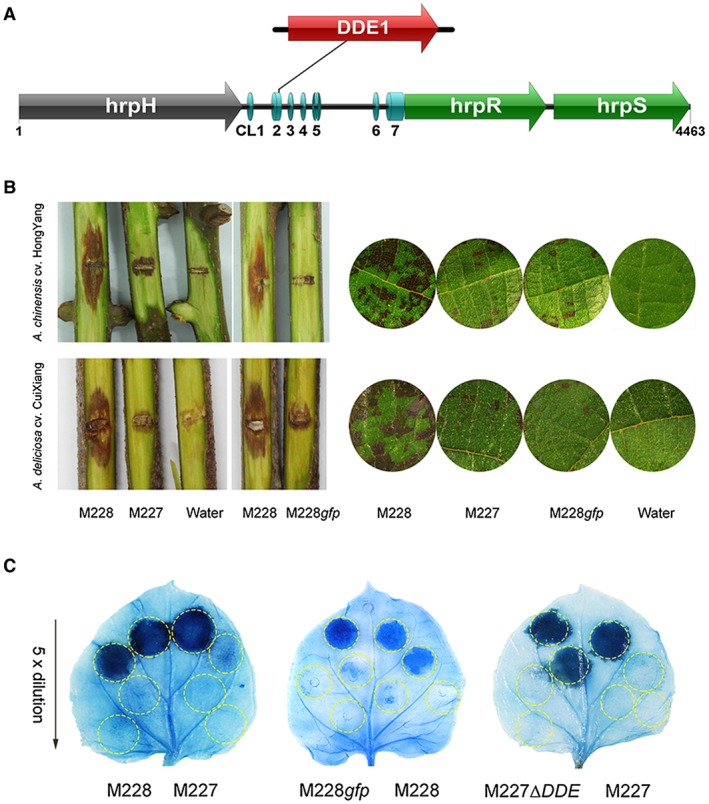Figure 6.

A conserved locus upstream of the hrpR gene is required for full pathogenicity and hypersensitive response (HR) elicitation activity in Pseudomonas syringae pv. actinidiae (Psa). (A) A 1176 bp transposable element is inserted 930 bp upstream of hrpR/S in the low‐virulent Psa strain M227. The NCS between hrpH and hrpR in the Type III secretion system (T3SS) cluster from the P. syringae group harbours seven conserved loci, designated CL1 to CL7. The illustration was drawn in IBS 1.03 (Liu et al., 2015) (B) The ‘‐930’ locus is required for pathogenicity in Psa. The up and down bioassay results on Actinidia chinensis var chinensis ‘Hongyang’ and var deliciosa ‘Cuixiang’, respectively. Left: Wound inoculation on detached kiwifruit canes at 15 days post‐inoculation (dpi). Right: vacuum infiltration inoculation on leaf discs at 5 dpi. For the inoculation, at least 10 canes or leaf discs were used for each strain. (C) The ‘‐930’ locus is involved in the attenuated capacity to elicit the HR in Nicotiana benthamina leaves in M227. Four zones in half a leaf were injected with fivefold diluted bacteria (107 CFU/mL to 8 x 104 CFU/mL), and three leaves from three independent plants were treated with each strain. M228 is the high‐virulent Psa strain, and in M228gfp, an 841 bp gfp fragment was artificially inserted at the ‘‐930’ locus. In M227∆DDE, the inserted locus was deleted. Experiments were repeated at least twice with similar results.
